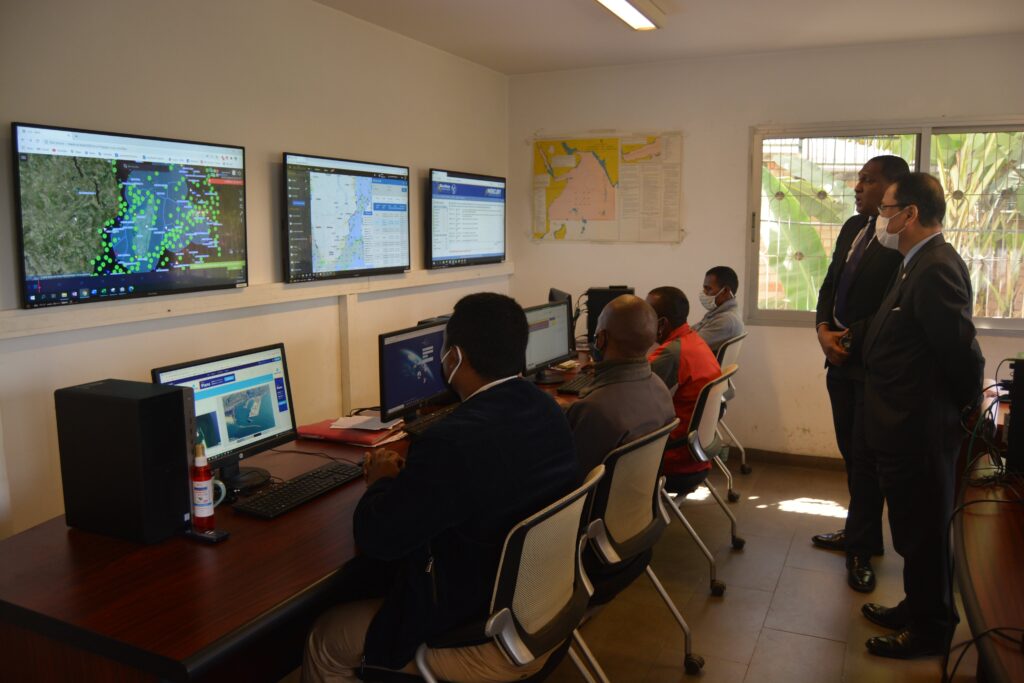ADF STAFF
Authorities seized 3,000 rifles, hundreds of rounds of ammunition and antitank missiles from a fishing vessel in the Gulf of Oman on January 15. The Iranian weapons were destined for the Houthi militia in Yemen.
Eleven days earlier, 2,000 assorted Iranian weapons bound for Yemen were intercepted on a fishing vessel in the same area, according to the Regional Maritime Information Fusion Center (RMIFC) in Madagascar.
Without vessel information the RMIFC shared with local authorities, some of the weapons might have wound up in Somalia and sold to violent extremist groups such as al-Shabaab and the Islamic State in Somalia. Iran has used the country to funnel weapons to the Houthi militia since about 2016.
According to the RMIFC, weapons trafficking in the East and Southern Africa and Indian Ocean (ESA-IO) region is rising. The center combats the issue by sharing and exchanging maritime security information on vessels suspected of committing crimes.
The center helps identify suspicious vessels before they are arrested for weapons trafficking and other sea crimes, such as drug smuggling, illegal human migration and illegal fishing. Constant monitoring by the center’s watch room helps it warn maritime law enforcement agencies of threats in a timely manner.
The January arrests “not only highlight that the use of fishing vessels and dhows continue to aid the activities of criminals, but the active existence of known smuggling and trafficking routes is also contributing to the illegal trade,” Lt. Saïd Lavani, Comoros international liaison officer at the RMIFC, told ADF in an email. “The lack of detention of suspected criminals intercepted at sea is also allowing the networks and smuggling runs to thrive.”
The RMIFC shares information with its sister center, the Regional Centre for Operational Coordination (RCOC) in the Seychelles and with any country that faces a maritime threat. If the country is not able to interdict, it can request help from the RCOC.
The frequent weapons seizures underline a “worrying threat in the region,” according to Lavani, who recommended that all countries in the region join the architecture of the Maritime Security Programme (MASE) so they can receive information from the regional centers. MASE is funded by the European Union and led in the ESA-IO region by the Indian Ocean Commission.
Comoros, Djibouti, France on behalf of Réunion island, Kenya, Madagascar, Mauritius and the Seychelles are current MASE members, although Lavani said Tanzania is likely to join soon.
A new report by the Institute for Security Studies revealed that the Iranian weapons smuggling network likely extends to groups linked to al-Shabaab in Ethiopia, Kenya and Mozambique. Iranian weapons also end up in the Central African Republic, South Sudan and Tanzania.
Iran also has confirmed links with many drug-smuggling networks around the Horn of Africa, according to Abdul Salam Mohammed, head of the Abaad Studies & Research Center in Yemen.
Iran “benefits from creating chaos in the Horn of Africa — something that makes it easy for it to penetrate [the region] with its agenda and threaten the international community,” Mohammed told almashareq.com.
According to Lavani, drug smugglers in the region also frequently use fishing vessels and dhows, which also are commonly used for illegal human migration.
In late January, for example, a fishing vessel monitored by the RMIFC was seized in the Gulf of Oman carrying about 4,000 kilograms of hashish and 512 kilograms of methamphetamine worth an estimated $33 million.
In mid-January, the Maritime Gendarmerie, a component of the French Navy, discovered 69 suspected illegal human migrants onboard a fishing vessel docked in Réunion, the center reported.

